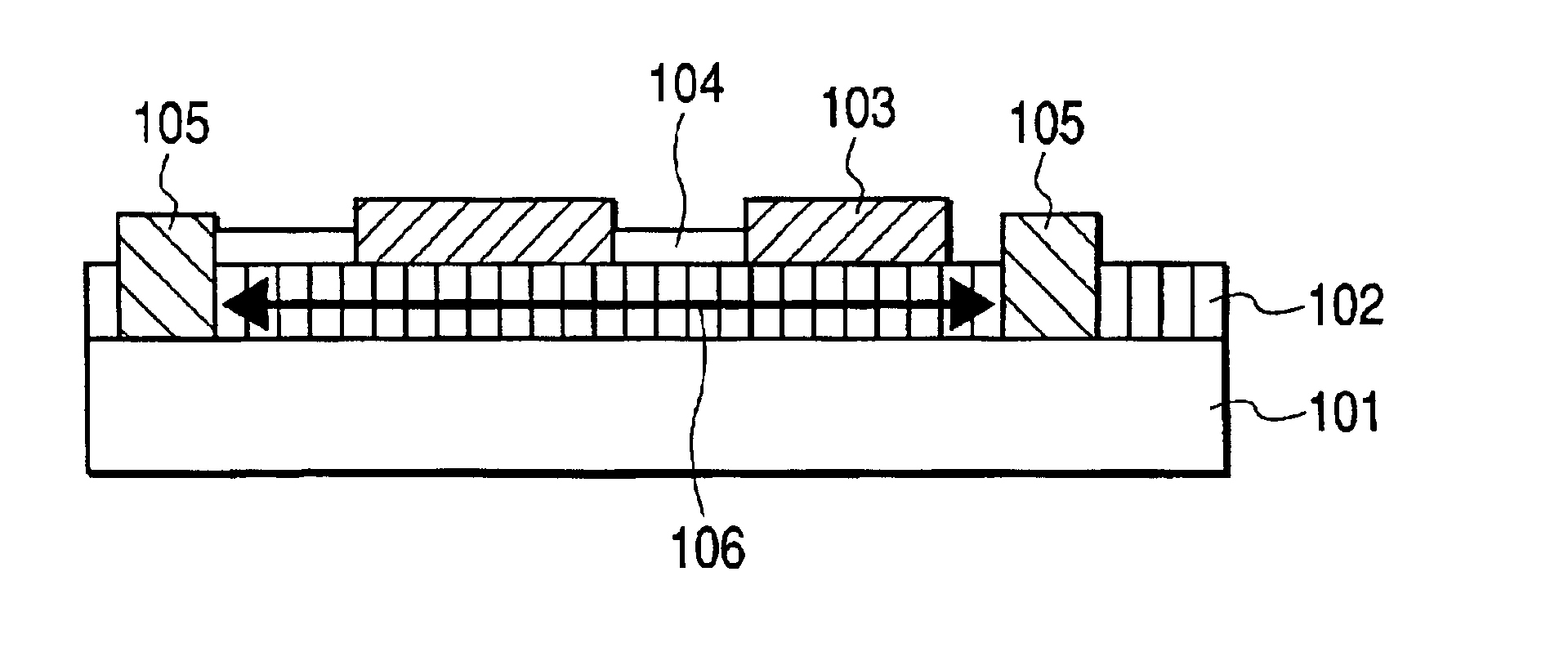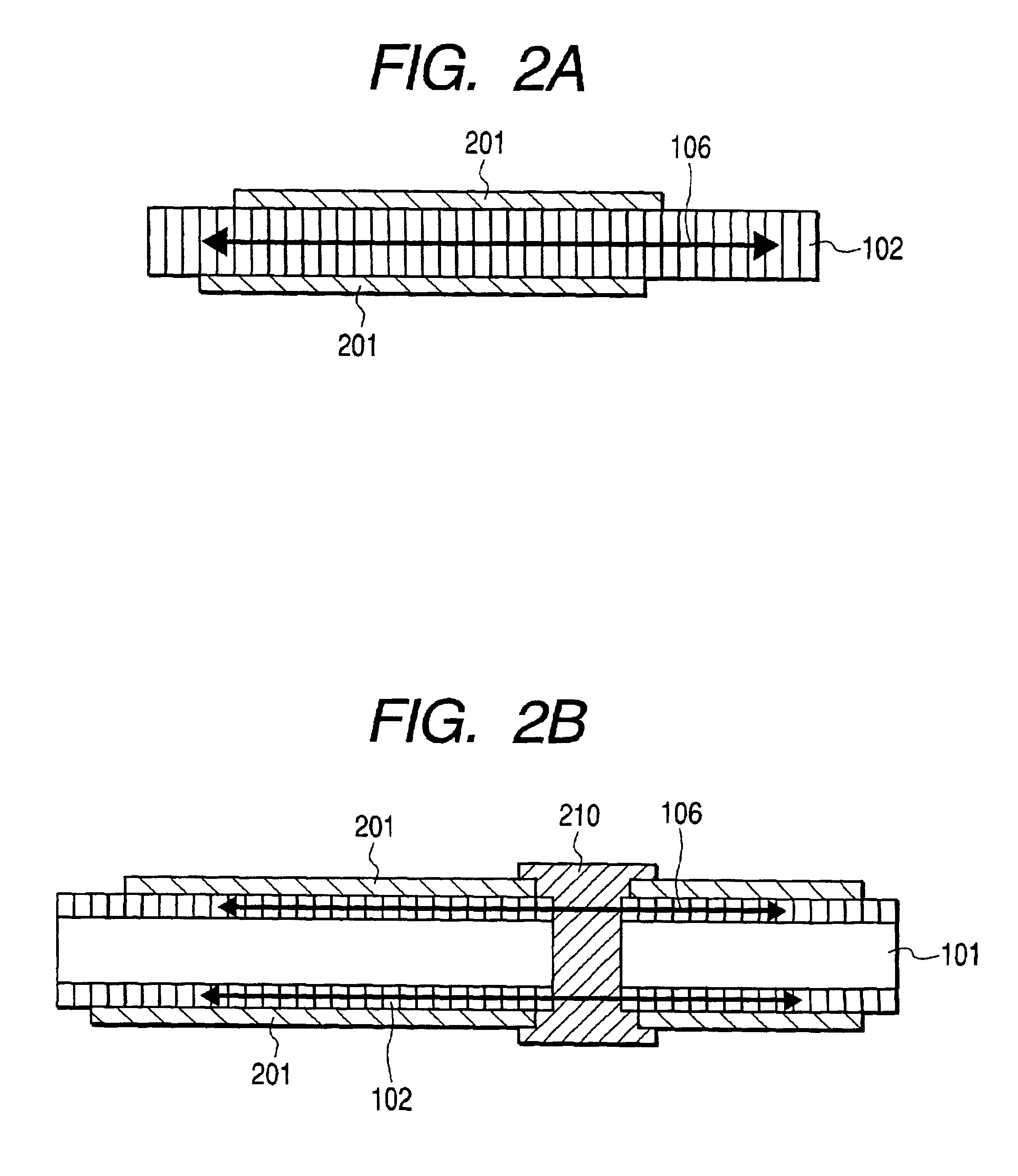Optoelectronic substrate
a technology of optoelectronic substrates and substrates, applied in the direction of optical elements, circuit optical details, instruments, etc., can solve the problems of increasing processing speed, electromagnetic radiation interference noise (emi), and affecting so as to reduce electromagnetic interference caused by electromagnetic emission noise, the heat release ability of optoelectronic wiring substrates can be improved, and the heat release ability of optoelectronic wiring substrates
- Summary
- Abstract
- Description
- Claims
- Application Information
AI Technical Summary
Benefits of technology
Problems solved by technology
Method used
Image
Examples
first embodiment
(First Embodiment)
[0044]An embodiment of the optoelectronic substrate of the present invention is explained below. In the description below, the optoelectronic substrate is occasionally referred to as an “optoelectronic wiring substrate”, but the both terms indicate the same thing.
[0045]FIG. 12 is a schematic sectional view for explaining an example of an optoelectronic wiring substrate of the present invention. In FIG. 12, the numeral 101 indicates a base plate; 109, a periodic structure such as a photonic crystal; 103, an electronic device formed on the surface of the photonic crystal; 104, an electric wire serving as an optical wiring layer formed on the photonic crystal: and 105, an optical device. The arrow 106 shows schematically the transmission of light through the photonic crystal.
[0046]In FIG. 12, although plural electronic devices and plural optical devices are formed on base plate 101: the respective devices need not necessarily be provided in plurality.
(Photonic Crystal...
second embodiment
(Second Embodiment)
[0089]A second embodiment of the present invention is described below in which anodized alumina is employed as the optical waveguide constituting an optical wiring layer.
[0090]The anodized alumina is sufficiently effective as the optical waveguide. Further, the anodized alumina of a photonic crystal structure having a regular hole arrangement will function in the same manner as shown in First Embodiment above.
[0091]In this embodiment, an electronic device, an optical device, and electric wiring are provided on a substrate having an anodized alumina layer formed thereon as shown in FIG. 1A. The anodized alumina has a function of an insulating layer and a function of an optical waveguide to couple optically the optical devices. The anodized alumina works as the optical wiring layer.
[0092]The anodized alumina which has an insulating property insulates electrically the devices. An electric circuit can be formed by forming electric wiring thereon. Further thereon, an o...
example 1
[0137]In this Example, anodized alumina was formed on an aluminum plate, and thereon an electric device and an optical device were mounted as illustrated in FIGS. 1A and 1B.
[0138]Firstly, on an aluminum plate, anodized alumina 102 was formed in a thickness of 5 μm. The remaining unanodized portion serves as base plate 101.
[0139]Prior to the anodization, hole-starting points (concaves) were formed on the surface of the aluminum plate by FIB irradiation. This enables the holes regularly arranged in a honeycomb state (triangular lattice state). In this example, a focused ion beam of Ga was projected to form hole-starting points in dots arranged in 360 nm intervals in triangular lattice arrangement, with ion species of Ga, at acceleration voltage of 30 kV, ion beam diameter of 100 nm, ion current of 300 pA, and irradiation time for each dot of 10 msec.
[0140]The anodization was conducted with an apparatus illustrated in FIG. 11, in a 0.3M phosphoric acid bath as the anodization electroly...
PUM
 Login to View More
Login to View More Abstract
Description
Claims
Application Information
 Login to View More
Login to View More - R&D
- Intellectual Property
- Life Sciences
- Materials
- Tech Scout
- Unparalleled Data Quality
- Higher Quality Content
- 60% Fewer Hallucinations
Browse by: Latest US Patents, China's latest patents, Technical Efficacy Thesaurus, Application Domain, Technology Topic, Popular Technical Reports.
© 2025 PatSnap. All rights reserved.Legal|Privacy policy|Modern Slavery Act Transparency Statement|Sitemap|About US| Contact US: help@patsnap.com



